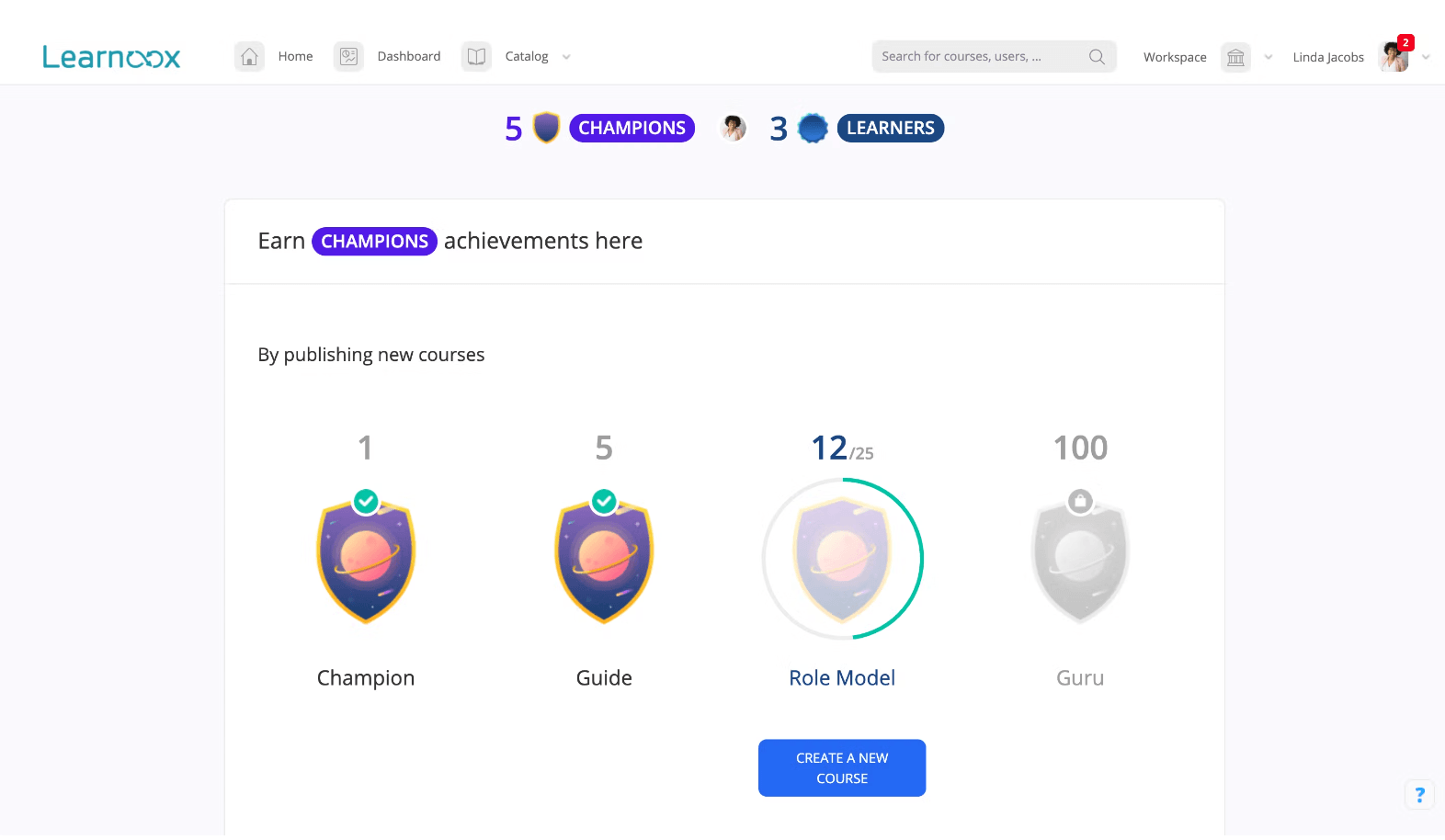Why (And How) To Gamify Learning
Gamification, or game-based learning, seems to be the latest “fad” in L&D. But it’s not just hype. Gamification really does work: 72% of employees believe gamification motivates them to work harder. [1]
Believe it or not, you’ve used gamification since you were a child. Think back to primary school, when your teacher would turn important lessons into interactive songs or storytelling opportunities. You’ve grown up, but the same tactics still work. Instead of stickers and songs, your employees are motivated by rewards and recognition.
Many L&D professionals find two types of gamification particularly successful: performance gamification and content gamification. That’s because these forms of gamification can take a relatively low lift to implement while leading to a better quality of learning and improved performance. [2]
We’re not saying you should turn your onboarding course into a game of Jeopardy or your corporate training into Monopoly. Instead, sprinkle game elements, like leaderboards, storytelling, and challenge modes, throughout your existing training and development courses.
What Type Of Gamification Is Best For Your Learners?
There’s no one-size-fits-all approach to gamifying your employee training programs. You need to take into consideration your team’s goals and your learners’ needs when deciding whether to gamify your training’s content or to incentivize employee performance.
- Content gamification works best when your team has existing content that’s useful but could be more interactive or engaging.
- Performance gamification is useful for adding gaming elements like levels or challenge modes to your training. This kind of gamification is useful for programs that need a total facelift or for programs in development.
You may even consider a hybrid, like our friends at Zotec Partners. The company took their existing, run-of-the-mill compliance training and turned it into an escape room experience that was interactive, educational, and reward-based.
The reason their gamified training was so successful was they sought feedback from employees, which led to a discovery of the kind of training that would be most meaningful. Zotec created a unique experience for their learners, and the investment paid off. Completion rates increased from 83% prior to the new training to 92% after the escape room was implemented—a significant year-over-year increase. [3] Even better, they cut their training time in half and received overwhelmingly positive feedback from learners.
Content Gamification
Content gamification happens when the training materials themselves are gamified. This can be particularly useful when you already have rock-solid content in place and need a way to make it more engaging for your learners.
There are many different ways to add game-like elements to content, but storytelling, challenges, and simulations are most common. For example, rather than jumping straight into the training’s lessons and objectives, lead with a compelling story to keep your learners interested in the training.
As counterproductive as it may sound, make room in your content for learners to fail by letting them take assessments more than once. The freedom to fail is often more rewarding for learners because it gives them an opportunity to take chances with their decision-making and learn from their missteps. [4] It also allows them to revisit content again and again until they’ve mastered it.
Performance Gamification
Performance gamification, or structural gamification, occurs when the system around the content is gamified. Think about it as the wrapper that surrounds your content by adding incentives to keep the motivation to learn high.
Unlike content gamification, the purpose of performance gamification is to guide users through their learning journey, motivating them at key moments to keep them engaged. For example, if you know learner engagement drops about halfway through onboarding training, that’s a great moment to implement a motivational message, give words of encouragement, or reward employees for the work they’ve done thus far.
The reason why performance gamification works is it taps into our human need for reward. The incentive theory of motivation suggests that, as humans, we’re driven by our desire for external validation. [5] The theory holds true in a workplace setting: 84% of HR professionals agree that workplace recognition positively impacts employee engagement. [6]
One common way to incorporate performance gamification into your training program is to make use of scoring elements, like levels, points, or leaderboards, to engage competition-driven employees.

360Learning’s collaborative learning LMS includes achievements and leaderboards to celebrate learner wins by ranking and recognizing those who excel in their training. As an added bonus, our platform also comes with mobile capabilities so your workers have on-the-go access to gamified learning.
Invest In An LMS With Gamification Built In
Your team has a lot of options to choose from when it comes to gamification, especially since eLearning is a fast-growing area of L&D that’s expected to increase in value by $147.79 billion from 2022 to 2025. [7]
You don’t need an LMS platform with every gamification feature in order to be successful, but we recommend considering a tool with features like badges, leaderboards, and challenge modes that encourage social interaction and build healthy competition between learners—two factors that support an ongoing learning environment.
An eLearning software solution like 360Learning with collaborative learning built in allows you to easily recognize top-performing employees, build healthy competition among colleagues, and keep motivation high.
Why not get your free demo today?
References:
[1] 25 Gamification Statistics [2022]
[2] The impact of gamification on students’ learning, engagement and behavior based on their personality traits
[3] How to Exceed 92% Completion Rates for Your Compliance Training with Escape Games
[4] The Gamification of Learning and Instruction Fieldbook
[5] The Incentive Theory of Motivation
[6] Using Recognition and Other Workplace Efforts to Engage Employees
[7] E-learning Market Growth, Size, Trends, Analysis Report by Type, Application, Region and Segment Forecast 2022-2026

360Learning
360Learning is the LMS for collaborative learning. We enable companies to upskill from within by turning their experts into champions for employee, customer, and partner growth.
Originally published at 360learning.com.




















